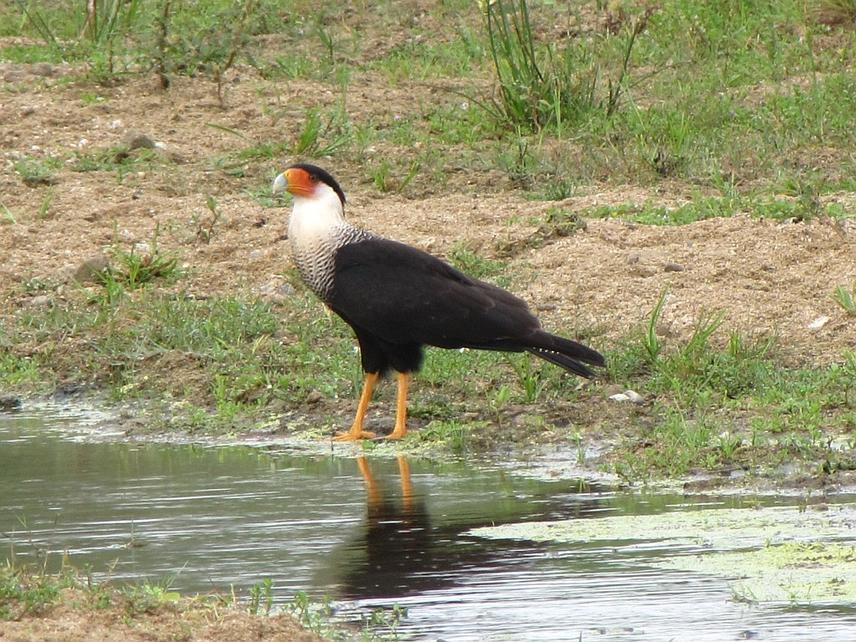Renzo Piana
To determine the ecological factors that influence the occurrence, distribution and abundance of diurnal raptor species in north-western Peruvian dry forests and to use these data to predict future responses of key species to environmental change.

A Crested Caracara (Caracara cheriway) in typical habitat for the species. © Renzo P. Piana
This project is aimed to obtain relevant ecological data on the distribution, habitat, microhabitat use and relative abundance of a wide array of diurnal raptor species in north western Peruvian dry forests. The impact of human induced activities (mainly cattle grazing) on the distribution and abundance of raptor species will be measured.
Diurnal raptors have large home ranges, are sensitive to human disturbances, and play an important ecological role in shaping and maintaining the structure of their prey population. Therefore are good indicators of ecosystem health and biodiversity. In north-western Peru, in an area known as the Tumbesian Endemic Region approximately 35 diurnal raptor species occur; this assemblage includes the Grey-backed Hawk, an Endangered species that occurs within a small range from north-western Ecuador to northern Peru. Diurnal raptors are notoriously difficult to survey and specific survey methods which are time consuming are required to assess the abundance of many species.
Distance sampling has been successfully used to estimate the density and/or abundance of a wide array of taxa, including birds; although has not been used in the tropics for raptor surveys. It is important to try and adapt less time consuming methods for estimating densities of diurnal raptor species, particularly in ecosystems that are being rapidly fragmented as a result of increased human activities so population trends can be evaluated and steps for their conservation can be rapidly taken. During the conduction of this research, I will use and later compare three different methods based on the distance sampling methodology to estimate relative abundance of diurnal raptors species; these methods are: transect counts, elevated point counts and random encounters.
Cattle grazing cause habitat degradation and the deterioration of forest patches and is suspected to threaten several bird species endemic to the Tumbesian Endemic Region. Despite its status as conservation areas, cattle grazing is very common inside the Cerros de Amotape National Park and the Tumbes National Reserve; this activity might be affecting prey densities and detectability, which in turn may be affecting raptor species distribution and the composition of the raptor communities. During my research I will evaluate cattle density inside these protected area and its impact on forest understory structure; this information will later be related to raptor species distribution and relative abundance and will be used to predict changes in the raptor community through different gradients of cattle grazing and habitat change.